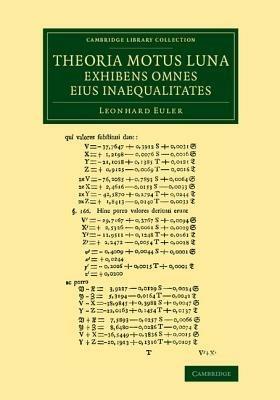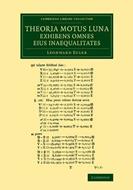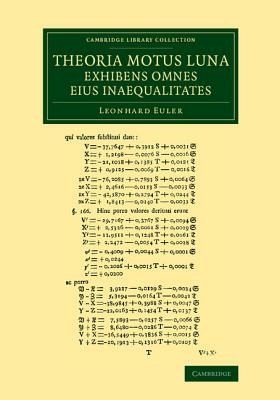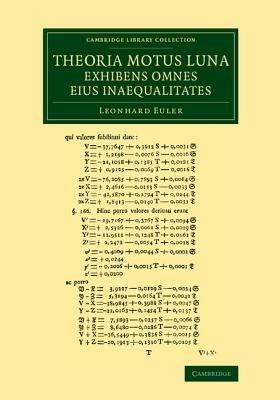Theoria motus lunae exhibens omnes eius inaequalitates: In additamento hoc idem argumentum aliter tractatur simulque ostenditur quemadmodum motus lunae cum omnibus inaequalitatibus innumeris aliis modis repraesentari atque ad calculum revocari possit
The problem of the moon's orbit was one that Leonhard Euler (1707-83) returned to repeatedly throughout his life. It provided a testing ground for Newton's theory of gravitation. Could the motion of the moon be entirely accounted for by Newton's theory? Or, as Euler initially suspected, did other forces need to be invoked? For practical purposes, if the moon's orbit could be accurately predicted, its motion would provide the universal timekeeper required to solve the longitude problem. In addition to the mathematical 'three-body problem', a topic still under investigation today, Euler was faced with the statistical problem of reconciling observations rendered inconsistent by experimental error. The present work, published in Latin in 1753, is Euler's triumphant solution. It may not be the last word on a subject which has occupied mathematicians and astronomers for over three centuries, but it showed that Newton's laws were sufficient to explain lunar motion.
-
Autore:
-
Editore:
-
Collana:Cambridge Library Collection - Astronomy
-
Anno:2014
-
Rilegatura:Paperback / softback
-
Pagine:362 p.
Le schede prodotto sono aggiornate in conformità al Regolamento UE 988/2023. Laddove ci fossero taluni dati non disponibili per ragioni indipendenti da Feltrinelli, vi informiamo che stiamo compiendo ogni ragionevole sforzo per inserirli. Vi invitiamo a controllare periodicamente il sito www.lafeltrinelli.it per eventuali novità e aggiornamenti.
Per le vendite di prodotti da terze parti, ciascun venditore si assume la piena e diretta responsabilità per la commercializzazione del prodotto e per la sua conformità al Regolamento UE 988/2023, nonché alle normative nazionali ed europee vigenti.
Per informazioni sulla sicurezza dei prodotti, contattare productsafety@feltrinelli.it



